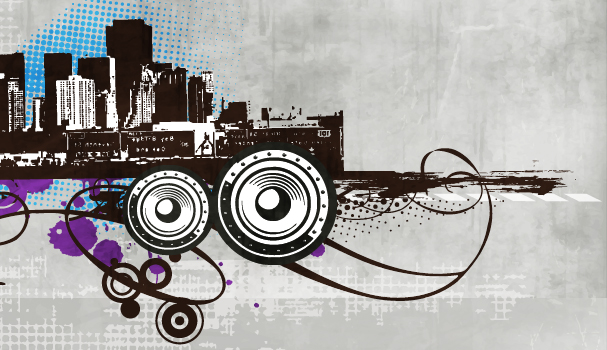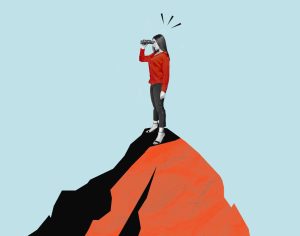There can be little doubt that technology has radically changed the way we consume music, with tech rapidly shifting and redefining people’s relationships with the artists they love. “We’ll look back on it as simply a transition in technology,” says Simon Cole, CEO of 7digital, the B2B digital music platform. The uptake of MP3 first on home computers and then on portable players cemented the idea of digital distribution. Whilst this originally centred around illegal downloads, new players like iTunes, Beatport and Bleep eventually gave consumers access to digital music for reasonable prices. Gradually services like YouTube helped pioneer the streaming revolution, paving the way for platforms like Spotify to irrevocably alter the way people access music. “It’s made it far more ubiquitous than it’s ever been,” Cole continues. “People can consume vast libraries of music wherever they are; that’s a very good thing for the industry.”
However, while it can be tempting to focus purely on tech platforms, it’s important to remember that these changes have been as much down to shifting consumer habits as the availability of new services. “Millenials don’t consume things the same way that previous generations did,” says David Plans, co-founder and VP of product at BioBeats, the adaptive media company creating software that dynamically generates music from the user’s heartbeat. “We used to want to own stuff,” he says. “Millenials don’t. Millenials are used to consumption by sharing.” Ultimately anything that stood in the way of the easy discovery, access and sharing of consumer’s favourite tracks was destined to be disrupted.
In light of this, the disruption seen in the music industry seems rather inevitable. And yet the music industry fought tooth and nail to prevent it. “The rights owners within the music industry did not embrace technology immediately; they were vey resistant,” says Paul Brindley, co-founder of Music Ally and the runner of IC tomorrow’s recent Music on the move contest. Instead of embracing the potential of new innovations, the more recalcitrant sections of the industry tried to block them by implementing copy protection and digital rights management, preventing it from capitalising on the disruption in quite the way it could have.
This attitude has caused much frustration amongst innovators and consumers alike but it isn’t hard to understand why there was so much heel-dragging from the big players. “A lot of it comes down to the fact that it was almost excessively profitable at one stage and where there’s excess profit there’s going to be an unwillingness to change to a different model,” says Carl Thomas, founder and director of Audiowings, the internet-enabled headphones. Physical media represented lucrative margins; sacrificing this for an uncertain benefit down the line wasn’t a risk that many were willing to take. “When you look at record label executives, they’ve got maybe a three or four year mandate,” he continues. “The time it takes for technology to pay out is a lot longer than that.”
Ch-ch-ch-ch-changes
The industry has, of course, come round in recent years; when, like Spotify, a platform is offering access to 50 million active users it becomes much harder to ignore. This kind of instantaneous access has made it far easier for musicians to reach audiences but, given the huge amount of competition for consumers’ time, has it also made it harder to stand out?
Not necessarily. Instead it may be that those that do have something unique to offer stand to gain more ground. “There’s been a genuine and significant democratisation, if you will, of music,” says Richard Cohen, founder and CEO of LoveLive, the music media company. “It’s become more meritocratic.” When an artist creates great music that chimes a chord with consumers, technology can definitely help them spread their reach much further and fast than previously possible; one only need to look at New Zealand born singer-songwriter Lorde, who went from releasing her debut EP on Soundcloud to securing a US number one single in only six months.
But, in actuality, this is also a sign that the market has become much more Darwinian; those that find their niche flourish whilst others simply founder. “Create great music and fans globally are going to want to engage with it,” Cohen continues. “Create rubbish music and the technology can be as great as you want, it’s still going to have limited appeal.”

For those working in the start-up space, this evolutionary ecosystem may chime a chord; Plans believes the most successful musicians are those that embrace the principles extolled by Eric Ries’ book The Lean Startup. “They need to make experiments, test assumptions, build audiences that they can track, segment and analyse,” he says. A musician may believe they have the best material in the world but they can’t honestly expect to just become an overnight success – they need to spend time testing and developing their brand in their market. “You have to release little bits here and there, build an audience and make sure that audience has interactions that can go viral.”
This means, however, that with artists increasingly promoting their own work and technology hugely simplifying distribution, the territory of labels is increasingly being encroached upon. “The music labels are feeling the squeeze,” says Matt Pfeil, co-founder & CCO of DataStax, the company that provides the database platform that Netflix, Spotify and Soundcloud use to store data on user activities. “They used to help you record your music and then distribute it; well recording it is cheaper than ever and – thanks to the internet – distribution is now trivial.” This represents a further squeeze on margins – if musicians can produce tracks at home and reach consumers themselves then there is less need to trade off their licensing rights and eventual income to labels. “The premium of what a lot of the labels used to offer is no longer so much of premium.”
Money on my mind
This means that, inevitably, the industry has reached a turning point. Artists and labels are hugely excited by the potential opportunities that innovation represents but they worry about whether they can continue to make an equitable living from services that seem to be giving everything away for a fraction of its former cost. The question on everyone’s lips is ‘can I really make a living when I’m only getting paid from $0.006 and $0.0084 per play?’
While many pundits and figureheads, from Thom Yorke to Taylor Swift, have launched scathing attacks on the financial sustainability of streaming, many have failed to appreciate the true complexity of the economic shift the industry is undergoing. Part of the problem with criticisms of the equity of the new streaming model is that people often try to understand it in terms of the old model. Compare the payout an artist used to get for releasing a CD with monthly streaming royalties and it is true that streaming revenues don’t stack up against direct sales.
But this doesn’t tell the full story. “The point is that once the albums were sold, that was the end of it,” says Cole. “With streaming, you’re talking about recurring revenues that go on for months and years.” Whilst streaming might not create as many overnight millionaires, it ensures artists will continue to get paid for years to come; rather than an ego-flattering payout, musicians get a sustainable income stream. “It changes the economic model of the whole of the music industry,” Cole continues.
This doesn’t mean that there hasn’t been a lot of high-profile protestation about the amount streaming pays artists. Taylor Swift’s recent decision to pull her back catalogue from Spotify has once again driven the issue into the public consciousness. However, whilst she has framed this as a general protest against streaming, this seems to be open to debate. “All of 7digital’s services are carrying Taylor Swift’s back catalogue and so is YouTube,” Cole says. “This is about Taylor Swift versus Spotify; there’s something going on between the two of them.” In fact, given that her daily YouTube views have doubled since removing her tracks from Spotify, one can’t help but wonder if this is a far more cynical consideration than it first appears.

Best foot forward
Regardless of how you feel about Swift’s decision, however, clearly questions about monetisation demonstrate that the current model has far from reached its final iteration. There are still plenty of ways start-ups with new ideas can help hone and refine the current model. “It hasn’t stabilised yet,” says Matt Sansam, programme manager of IC tomorrow, the Innovate UK programme that stimulates digital innovation and growth. “If you’re a tech company or a start-up with an idea, there are plenty of opportunities for disruption and innovation.”
It’s true that any budding brand that believes it’s going to take on Spotify in the streaming market is likely setting itself up for a fall. “There’s always going to be the few platforms that are going to achieve a stranglehold,” says Cohen. But increasingly, innovation is spreading into areas that are less about delivery and more about finding new ways to unlock value for artists. “When we look at declining recorded music income, what had been seen previously as maybe an ancillary revenue stream is being relied upon ever more as a primary source of income,” he says.
One way to unlock additional value is through the creation of more granular streaming services. “There are lots of different types of music consumers out there and we need to develop services that appeal to all those different types of consumers,” says Brindley. He points to services like O2 Tracks and MTV Trax that present only the music in the top charts foregoing the regular subscription required by bigger services like Spotify; services that target specific user demographics are just starting to come into their own. “Right through from the die-hards who spend hundreds of pounds every year through to the more casual consumers, there’s still a lot more to be done within different segments of the market,” he explains.
But creating a truly granular listening experience that focuses on delivering precisely what the user wants to hear isn’t all that straightforward. Whilst consumers have access to more music than at any other time in history, almost paradoxically finding things that one actually wants to hear has become harder than ever.
This means that the art of providing targeted recommendations has come into its own. “The best way to solve that is through recommendation engines that take into account past listening habits,” says Pfeil. Digital music carries hundreds of data points that can be used to analyse patterns in users’ listening habits; details from the speed of a track in BPM to the emotional tone of a piece can now be detected by data analysis companies. “Based on a user’s listening patterns, you can say ‘if this person listened to a bunch of songs that happen to have acoustic guitar in them, let’s recommend some other songs that have acoustic guitar in them’.”
Wearables are also providing huge opportunities for tech start-ups working in the music space. Inevitably the rise of wearables and streaming has gone hand in hand; with space increasingly at a premium and connectivity gradually becoming more ubiquitous, it does seem like wearables and streaming are a match made in heaven. But whilst the focus on wearables thus far tends to just be focused on easy access to music on the go, their true potential is their ability to drive smarter recommendations
“We’re all creatures of habit and the way in which we listen to music is very much based on subconscious patterns that we’re probably not even aware of,” says Thomas. “Given you have devices that are worn 24/7 now and that inherently understand us, they can recommend music based on those patterns.” If wearables can recognise that someone is exercising or on their morning commute, learning and serving up the music the user desires in that context is a relatively simple step forward.
The music industry has seen plenty of disruption and whilst things have certainly settled over the last few years, it would be naive to believe that there’s no more room for the industry to grow. “We may be at the end of the beginning but we’re certainly not at the end,” concludes Ben Drury, chief strategy officer of 7digital. “We’re far from finished; there’s lots still to happen.”
Learn to fly
Audiowings
For Carl Thomas, founder of Audiowings, life has always been about two things: music and tech. When he was 13, his father set up his own internet service provider (ISP). “Instead of running around, getting drunk and chasing girls, I was running around setting up dial-up services and broadband services,” he recalls. Thomas was always interested in the way connectivity could help people discover and consume music, setting up his own internet radio station during his GCSEs at the tender age of 16.
Thomas decided he wanted to learn more about the industry, going to university to study media and communications. But he gradually became disillusioned and dropped out in his final year. “At the time, pretty much four companies controlled the entire industry,” he says. “It just didn’t really sit well with me.” He spent some time working for ISPs and for O2 but with the rise of mobile devices, he began to once again think about bringing together music and connectivity. “I started to think about about how you could have connected devices that played music content to us without having that human element there,” he says. “That’s how we got to connected headsets.”
Audiowings are streaming headphones that function without the need for a smartphone. “We’re creating a connected pair of headphones,” Thomas explains. But the real potential of Audiowings is how they tailor the listening experience to a user’s tastes and activities. “They can distribute relevant audio based on where you are, who you’re with and biometrically on what you’re doing in real time.”
Music from the heart
BioBeats
Recent winner of IC tomorrow’s Music on the Move contest, BioBeats is aimed at helping people to de-stress and improve all round health, with an app that creates music based on your heartbeat. But originally it had a focus on something a little more cerebral. “It first looked at brainwaves as opposed to cardiovascular data,” says David Plans, the company’s co-founder and VP of product. But its VC suggested a pivot and this ended up being a very serendipitous decision. “There is a lot of information in a heartbeat,” he explains. “It’s a more accurate way of looking at things like stress than just brainwaves, which are notoriously difficult to interpret.”
BioBeats is an effective demonstration of the potential for cross-pollination between music and other disciplines, particularly in the healthcare sector. “There’s clinical evidence in psychiatry that sound is a much more important agent to memory and recall than anything else,” says Plans. Not only does this make it potentially effective for slowing the damage caused by degenerative disorders like Alzheimers and dementia, it can also be a great way to promote behaviours that support good neurological and physiological health. “Using sound is efficient because it is immediately emotional,” he says.
BioBeats is now expanding beyond just the heart; its new app, Get On Up, uses information about people’s movement and gait to generate musical feedback. “It’s about getting people to pay attention to their health in a way that doesn’t necessarily involve charts and spreadsheets,” says Plans. ![]()
Share via:








































